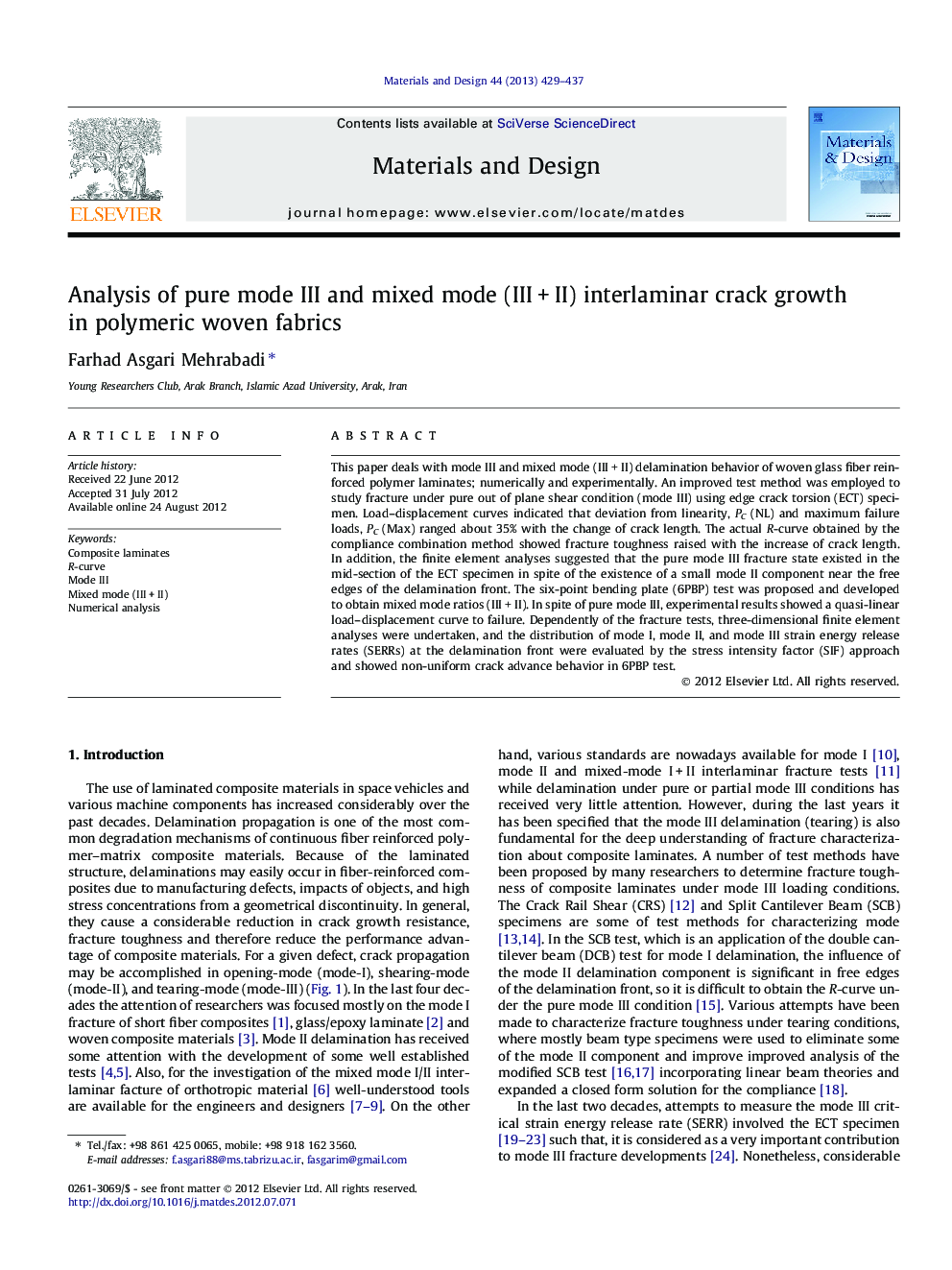| Article ID | Journal | Published Year | Pages | File Type |
|---|---|---|---|---|
| 830351 | Materials & Design (1980-2015) | 2013 | 9 Pages |
This paper deals with mode III and mixed mode (III + II) delamination behavior of woven glass fiber reinforced polymer laminates; numerically and experimentally. An improved test method was employed to study fracture under pure out of plane shear condition (mode III) using edge crack torsion (ECT) specimen. Load–displacement curves indicated that deviation from linearity, PC (NL) and maximum failure loads, PC (Max) ranged about 35% with the change of crack length. The actual R-curve obtained by the compliance combination method showed fracture toughness raised with the increase of crack length. In addition, the finite element analyses suggested that the pure mode III fracture state existed in the mid-section of the ECT specimen in spite of the existence of a small mode II component near the free edges of the delamination front. The six-point bending plate (6PBP) test was proposed and developed to obtain mixed mode ratios (III + II). In spite of pure mode III, experimental results showed a quasi-linear load–displacement curve to failure. Dependently of the fracture tests, three-dimensional finite element analyses were undertaken, and the distribution of mode I, mode II, and mode III strain energy release rates (SERRs) at the delamination front were evaluated by the stress intensity factor (SIF) approach and showed non-uniform crack advance behavior in 6PBP test.
► Results, indicated the modified ECT test could be very useful for creating of mode III crack growth. ► It is shown that GIII increases with the crack length increase considering two critical points. ► In spite of mode III, 6PBP tests showed a quasi-linear load–displacement curve to failure.
